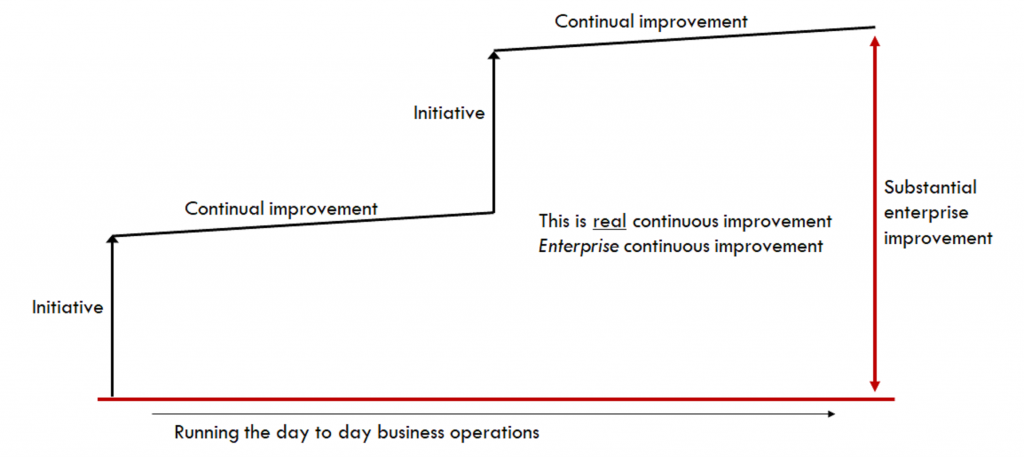Advanced enterprise improvement strategy
Mastered Lean, Six-Sigma, Design Thinking and Agile? Running lots of initiatives, but at an enterprise level, the real rate of improvement is less than you’d like or expect?
Let Gare Corporate share with you what the courses, consulting firms and case studies don’t tell you.
It’s relatively easy to look at a specific operational issue and run a project to address it. A good project leader will also gather before and after data to validate success. If all your initiatives are run like this, you could be forgiven for expecting that the overall performance of your enterprise will reflect the sum of the benefits delivered by each project. It’s obvious.
But it’s quite wrong.
Systems thinking [see Principle 5] tells us that sustainable improvement at an enterprise level requires a focus on the whole system. You need to understand the interconnections and interdependencies of all of the people, relationships and processes. You need to address the underlying drivers and causes of failure. And you need to consider what has been learnt in the past and what is likely to happen in the future. The larger and more complex an organisation is, the greater the temptation for Boards, CEOs and Senior Executives to dismiss what is necessary as “impossibly expensive” and the benefits as “too distant” or “not tangible”. This thinking is unfortunately reinforced when key roles are seen as fixed term or vulnerable to summary termination based on political standing or short-term financials.

The result is that most enterprises follow an improvement path that has a ‘saw-tooth’ profile:
There is net improvement over time, but nothing like the sum of the improvements promised by each of the recent initiatives. If the industry is also evolving in complexity due to technology and globalisation, it may be that the rate of unexpected incidents is also spiralling upwards, sapping capacity to drive improvement.
But it’s OK as long as all the competition are doing essentially the same things.

If one enterprise in a competitive market has the wherewithal to achieve real Enterprise Continuous Improvement, the competitive advantage they will achieve over time quickly becomes unassailable.
Less than 1 enterprise in 1000 succeeds in sustainably achieving this outcome.
Call today to find out how to make your business the one.

